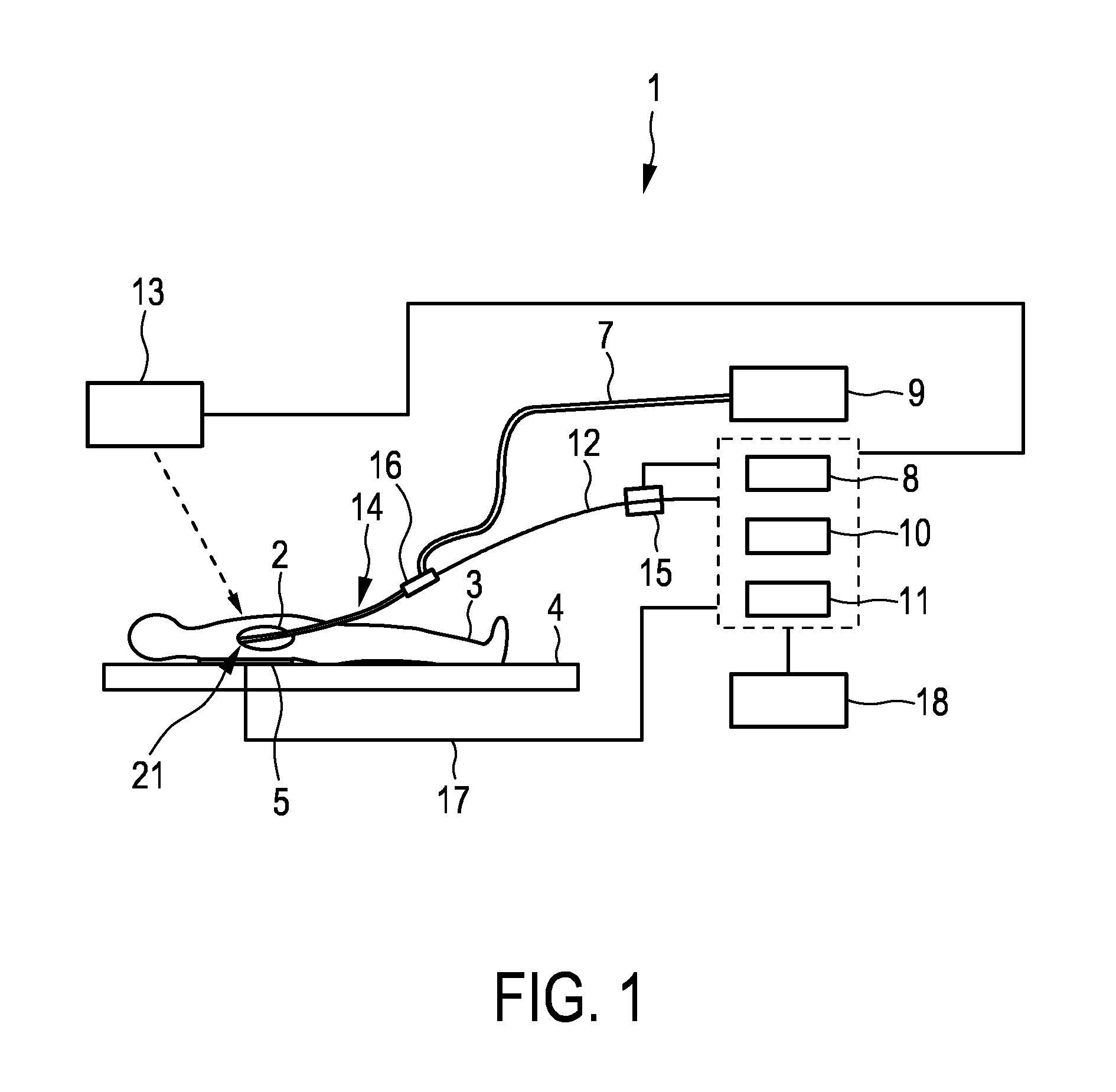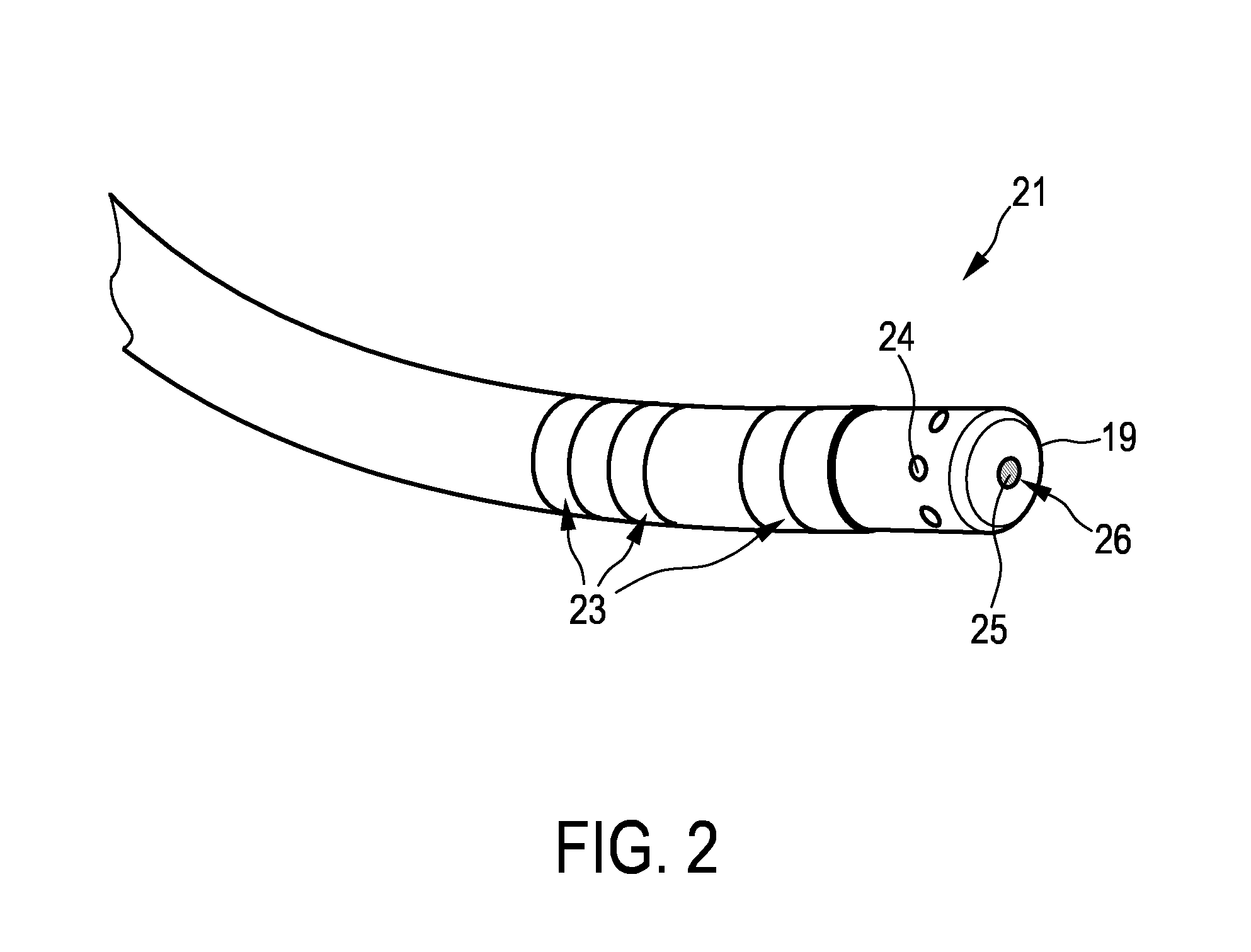Energy application apparatus
a technology of energy application and equipment, applied in the field of energy application equipment, can solve the problems of difficult direct communication between the energy source providing ablation energy and the monitoring uni
- Summary
- Abstract
- Description
- Claims
- Application Information
AI Technical Summary
Benefits of technology
Problems solved by technology
Method used
Image
Examples
Embodiment Construction
[0042]FIG. 1 shows schematically and exemplarily an embodiment of an energy application apparatus 1 for applying energy to an object. In this embodiment, the energy application apparatus 1 is a cardiac ablation apparatus for performing a cardiac ablation procedure, which comprises an ablation catheter 14 with a catheter handle 16. The tip 21 of the ablation catheter 14 has been introduced into a heart 2 of a person 3 lying on a table 4. The catheter tip 21 is exemplarily shown in more detail in FIG. 2.
[0043]The catheter tip 21 comprises an ablation electrode 19 formed as a cap electrode with irrigation openings 24 and a sensing opening 26. The irrigation openings 24 are arranged along the circumference of the cap electrode 19 and the sensing opening is arranged centrally in the frontal surface of the cap electrode 19. An ultrasound transducer 25 is located within the cap electrode 19 at the opening 26 such that cardiac tissue can be ultrasonically sensed through the sensing opening ...
PUM
 Login to View More
Login to View More Abstract
Description
Claims
Application Information
 Login to View More
Login to View More - R&D
- Intellectual Property
- Life Sciences
- Materials
- Tech Scout
- Unparalleled Data Quality
- Higher Quality Content
- 60% Fewer Hallucinations
Browse by: Latest US Patents, China's latest patents, Technical Efficacy Thesaurus, Application Domain, Technology Topic, Popular Technical Reports.
© 2025 PatSnap. All rights reserved.Legal|Privacy policy|Modern Slavery Act Transparency Statement|Sitemap|About US| Contact US: help@patsnap.com



